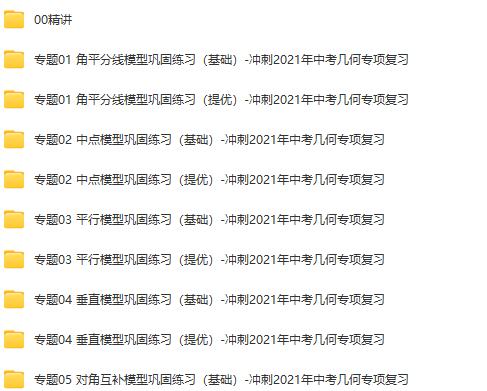初中英语|2021中考英语专项复习专题三:介词、连词
发布于 2021-04-11 22:12 ,所属分类:知识学习综合资讯


1
介词的用法
介词的功能
介词是一种虚词,用来表示名词或相当于名词的其它词语句中其它词的关系,不能单独使用。介词可与名词或相当于名词的其它词构成介词短语。介词短语可在句中作定语,状语,表语和宾语补足语。例如:
The boyover thereis John’s brother. (定语)
The girl will be backin two hours. (状语)
Our English teacher isfrom Australia. (表语)
Help yourselfto some fish. (宾语补足语)
常用介词的用法辨析
(1)表时间的介词
1)at, in on
表示时间点用at。例如:at six o’clock, at noon, at midnight。表示在某个世纪,某年,某月,某个季节以及早晨,上午,下午,晚上时,用in。例如:in the nineteenth century, in 2002, in may, in winter, in the morning, in the afternoon等。表示具体的某一天和某一天的上午,下午,晚上时,用on。例如:on Monday, on July 1st, on Sunday morning等。
2)since, after
由since和after 引导的词组都可表示从过去某一点开始的时段,但since词组表示的时段一直延续到说话的时刻,因而往往要与现在完成时连用。而after词组所表示的时段纯系过去,因而要与一般过去时连用。例如:
I haven’t heard from him since last summer.
After five days the boy came back.
3)in, after
in与将来时态连用时,表示“过多长时间以后”的意思,后面跟表示一段时间的词语。After与将来时态连用时,后面只能跟表示时间点的词语。After与过去时态连用时,后面才能跟表示一段时间的词语。例如:
He will be back in two months.
He will arrive after four o’clock.
He returned after a month.
(2)表示地点的介词
1)at, in, on
at一般指小地方;in一般指大地方或某个范围之内;on往往表示“在某个物体的表面”。例如:
He arrived in Shanghai yesterday.
They arrived at a small village before dark.
There is a big hole in the wall.
The teacher put up a picture on the wall.
2)over, above, on
over, on和above都可表示“在……上面”,但具体含义不同。Over表示位置高于某物,在某物的正上方,其反义词是under。above也表示位置高于某物,但不一定在正上方,其反义词是below。On指两个物体表面接触,一个在另一的上面。例如:
There is a bridge over the river.
We flew above the clouds.
They put some flowers on the teacher’s desk.
3)across, through
across和through均可表示“从这一边到另一边”,但用法不同。Across的含义与on有关,表示动作在某一物体的表面进行。Throgh的含义与in有关,表示动作是在三维空间进行。例如:
The dog ran across the grass.
The boy swam across the river.
They walked through the forest.
I pushed through the crowds.
4) in front of, in the front of
in front of 表示“在某人或某物的前面”,在某个范围以外;in the front of 表示“在……的前部”,在某个范围以内。例如:
There are some tall trees in front of the building.
The teacher is sitting in the front of the classroom.
介词的固定搭配
介词往往同其他词类形成了固定搭配关系。记住这种固定搭配关系,才能正确使用介词。
(1)介词与动词的搭配
listen to , laugh at, get to, look for wait for, hear from, turn on, turn off, worry about, think of, look after, spend…on…, 等。
(2)介词与名词的搭配
on time, in time, by bus, on foot, with pleasure, on one’s way to, in trouble, at breakfast, at the end of, in the end等。
(3)介词与形容词的搭配
be late for, be afraid of, be good at, be interested in, be angry with, be full of, be sorry for等。
2
连词的用法
连词的功能
用来连接词,短语,从句或句子的词叫连词。连词是一种虚词,在句中不能单独使用。连词可分为两类:并列连词和从属连词。
并列连词
并列连词用来连接具有并列关系的词,短语或句子。常见的并列连词有:
(1)表并列关系的and, both…and, not only…but also, neither…nor等。
(2)表选择关系的or, either…or等。
(3)表转折关系的but, while等。
(4)表因果关系的for, so等。
从属连词
从属连词用来引导从句。常见的从属连词有:
(1)引导时间状语从句的after, before, when, while, as, until, till, since, as soon as等。(2)引导条件状语从句的if, unless等。
(3)引导原因状语从句的because, as, since等。
(4)引导目的状语从句的so that, in order that等。
(5)引导让步状语从句的though, although, even if等。
(6)引导结果状语从句的so that, so…that, such…that等。
(7)引导比较状语从句的than, as…as等。
(8)引导名词从句的that, if , whether等。
常用连词的用法辨析
(1) while, when, as
这三个连词都可引导时间状语从句,但用法有所不同。
1) 当某事正在进行的时候,又发生了另一件事。While, when, as 都可用来引导表示“背景”的时间状语从句。例如:
As/When/While I was walking down the street I noticed a police car.
2) 当两个长动作同时进行的时候,最常用的是while。例如:



























相关资源